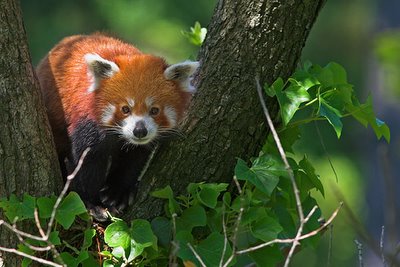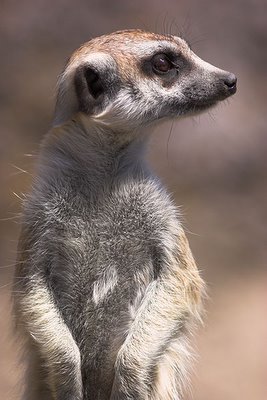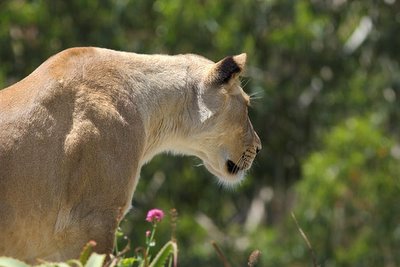On Friday I drove back from Point Howard after a week with BJ, R, H, J and LH. A week of sleeping on the floor in BJ’s lounge with the ruru calling outside, kereru peering in the window from the kowhai branch framing a view of the bush covered hills behind Eastbourne.  When I first arrived we sat behind the house drinking tea and eating Christmas cake before the ants got it, with J and LH honing their coordination by biffing lumps of clay at the mummified rat BJ had retrieved from his ceiling. A relaxed week of late mornings and later nights watching DVDs—the wonderful Spirited Away and the parody/comedy Shaun of the Dead; reading books; having conversations and trying to teach LH words like ‘ruminate’, ‘neglect’, ‘grudgingly’, and ‘erudite’—and the meaning of words like ‘silence’, of which he seemed to have no comprehension. We spent one day visiting the Wairarapa, at Martinborough where a woman in her 50s looked at us with the kind of look you wear when you’ve stepped in something dogs have coughed up—she looked so far down her nose it’s a wonder she didn’t keel over from vertigo—but the food was fresh and delicious and the waitresses were friendly and cheerful (I secretly wished it were the other way round, although I don’t know what friendly and cheerful food would be like but it sounds good) and they knew the antics 8-year-olds get up to in cafes and how to circumvent them with a smile. Afterwards, we drove to Lake Ferry where we sat in the warm sun and brisk wind watching big blackbacked gulls soaring and tilting; through binoculars they looked translucent, lit from within and shining against an utterly perfect blue sky. The olive-green sea heaved up in huge rolling swells, curved over and burst in mighty explosions of churning foam; three surfers bobbed beyond the breakers, waiting endlessly for the right wave and three seconds of heaven—several times I saw one catch a crest, stand, and immediately topple off, but finally one managed to get going and rode the wave the whole way in. I’ve never surfed, but I knew how he felt.
When I first arrived we sat behind the house drinking tea and eating Christmas cake before the ants got it, with J and LH honing their coordination by biffing lumps of clay at the mummified rat BJ had retrieved from his ceiling. A relaxed week of late mornings and later nights watching DVDs—the wonderful Spirited Away and the parody/comedy Shaun of the Dead; reading books; having conversations and trying to teach LH words like ‘ruminate’, ‘neglect’, ‘grudgingly’, and ‘erudite’—and the meaning of words like ‘silence’, of which he seemed to have no comprehension. We spent one day visiting the Wairarapa, at Martinborough where a woman in her 50s looked at us with the kind of look you wear when you’ve stepped in something dogs have coughed up—she looked so far down her nose it’s a wonder she didn’t keel over from vertigo—but the food was fresh and delicious and the waitresses were friendly and cheerful (I secretly wished it were the other way round, although I don’t know what friendly and cheerful food would be like but it sounds good) and they knew the antics 8-year-olds get up to in cafes and how to circumvent them with a smile. Afterwards, we drove to Lake Ferry where we sat in the warm sun and brisk wind watching big blackbacked gulls soaring and tilting; through binoculars they looked translucent, lit from within and shining against an utterly perfect blue sky. The olive-green sea heaved up in huge rolling swells, curved over and burst in mighty explosions of churning foam; three surfers bobbed beyond the breakers, waiting endlessly for the right wave and three seconds of heaven—several times I saw one catch a crest, stand, and immediately topple off, but finally one managed to get going and rode the wave the whole way in. I’ve never surfed, but I knew how he felt.
Te Papa, the Museum of New Zealand on a rain-drenched day. On the risers of the stairs to the first floor, provocative questions encouraged visitors to view the exploration of genetic modification—“Do you love me enough to clone me?” one asked. We stood beneath the life-sized replica of Harpagornis moorei, poised at the instant of attacking a giant moa, and I felt the mixed emotions of relief that I could tramp safely in the New Zealand mountains with no possibility of being fed to a giant eagle chick, yet the deep sadness and hopelessness of extinction. Gone forever.
We moved on. There’s too much to take in; everything from the natural world to the technological: glacial moraines to genetic modification; the bone-white skeleton of Phar Lap with Bill Manhire’s wonderful poem to the spectacular colours and aerodynamic gleam of John Britten’s superbike. At the shop on the first floor, a boy with a digital camera snapped a photo of a Lord of the Rings helmet, but no one was photographing the Holden Kingswood station wagon Jeff Thomson had repanelled with corrugated iron painted the colours of rust. I love that car—it may be the only car I have any affection for. The everyday turned to art—for me, both inspiration and aspiration.
poem to the spectacular colours and aerodynamic gleam of John Britten’s superbike. At the shop on the first floor, a boy with a digital camera snapped a photo of a Lord of the Rings helmet, but no one was photographing the Holden Kingswood station wagon Jeff Thomson had repanelled with corrugated iron painted the colours of rust. I love that car—it may be the only car I have any affection for. The everyday turned to art—for me, both inspiration and aspiration.
Outside, steady, saturating rain glazed buildings and pavements and veiled the harbour. My ancient Nepalese woollen jacket kept me dry, but smelt like a wet dog for the next couple of days.
We visited Wellington Zoo the day after I arrived, a day of heat and sirens—sirens, as it turned out, that were heading for the zoo. We’d admired the otters, been captivated by the cotton top tamarins, gazed back at the goanna, and paused in the shade near the giraffe enclosure where the enormous beasts with their prehistoric heads took slow, curling, tonguefuls of leaves from the outstretched hands of entranced visitors. From another part of the zoo, out of sight, lions roared—a deep, immensely powerful sound stirring a primitive urge to run like hell. The African wild dogs had stretched out in the shade near the fence; I’d never seen them live and close and was fascinated by how strong and intelligent—and beautiful—they appeared. I raised the camera and pointed it at one of the dogs; immediately it looked straight at me and growled quietly, stood up, and walked to where I couldn’t take a photo. Awed and full of respect, I honoured its request and didn’t try to photograph any of the pack.
We carried on past the Eastern grey kangaroos, to the hamadryas baboons where youngsters fought each other for possession of a battered, empty, soft drink bottle. Disputes over useless, shiny stuff; conflict over the concept of possession. I found it easy to believe these are our cousins. In contrast, the chimps seemed quiet, pacific, possibly bored. They sat high on their eyrie in the sun, occasionally picking morsels from someone else’s hair and ignoring the approaching sirens. We walked over to the lions, to the platform where we could look down into the enclosure. A sign said, “Danger! Do not sit children on the railing.”
I looked at LH. “Would you like me to sit you on the railing?” I asked.
After he’d declined the offer, we leaned on the railing instead, and watched the lions. Two lionesses, later joined by a third, sat on the huge boulder in the middle of the cage; they seemed intent on studying something happening out of sight below. We watched for a while, then left.
“I’m not keen on lions,” I said.
“Why not?” LH wanted to know. “Lions are great; they’re my favourites.”
“They eat their young,” I replied, then corrected myself. “Actually, they eat other people’s young.”
“But you like tigers.”
“Tigers are solitary; they don’t go around in groups ganging up on other animals,” I said, unreasonably, not quite sure myself why or even if this explained my dislike of lions, and fully aware of the inconsistency with my love of African wild dogs. Actually, I’m not sure why lions are my least favourite cats—in fact, they’re among my least favourite animals, which is saying a lot, because they’re cats and I love most cats, particularly the medium sized cats. I was far more delighted to have seen the servals.
We finished by visiting the red pandas, by eating icecreams in the shade near the meerkats, and by watching two cheetahs being taken for a walk. Theirs was an alertness—an attention to their surroundings—I’d noticed among few other animals; a marked contrast to the look of lassitude I’d seen when they were sprawled in the shade in their enclosure. The guides repeatedly warned onlookers not to run, and I wondered when those cheetahs ever had the opportunity to stretch out and chase something. I suppose it’s a problem all zoos must face: how to provide, or compensate for the lack of, opportunities for animals to behave as they would in the wild. Perhaps most animals don’t care; perhaps they’re perfectly content to eat, sleep, and measure out their lives with cat food spoons—or maybe, for some, that’s not enough. Put simply, while I acknowledge their value in many important respects, zoos leave me uneasy.
As we finished our icecreams, one of the zoo staff walked by and told us the area near the lions’ enclosure had been closed. I asked if she’d mind telling us why, to which she replied just that there was an ambulance there. I didn’t press her for details, but later we discovered a keeper had been attacked by two lions. He survived, shaken and hospitalised but without life-threatening injuries.  Apparently the lions seemed mostly intent on playing with him, but I suspect that means the way cats play with mice rather than the way dogs frolic with their owners. Since then we’ve heard several different explanations, but what’s important is that everyone survived—the lions as well as the keeper.
Apparently the lions seemed mostly intent on playing with him, but I suspect that means the way cats play with mice rather than the way dogs frolic with their owners. Since then we’ve heard several different explanations, but what’s important is that everyone survived—the lions as well as the keeper.
The evening before I left, we walked the Mount Lowry ridge track, through tunnels of overhanging tree ferns, past beeches with that magnificent warm sweet smell like a botrytised riesling and wasps stealing the honeydew. Tui whirred between branches, fluffed feathers and clucked, wheezed, and warbled. On the way back, BJ and J and I stopped at the roundabout at the top of the road and looked out over the harbour. Shafts of sunlight streamed down from broken cloud, lighting the water, silhouetting foreground trees and the Wellington hills; an interisland ferry slid into the light and a gull floated past like an elegy. I thought again of Harpagornis and the moa. Gone forever—but so was this moment; so is every moment. All time is unredeemable, according to T.S. Eliot—but right then I needed no reminder to make the most of every moment.
Photo 1: Red panda, Wellington Zoo. [Captive animal]
Photo 2: Blackbird (Turdus merula) sunbathing, Wellington Zoo. [Not captive!]
Photo 3: Meerkat, Wellington Zoo. [Captive animal]
Photo 4: Lion, Wellington Zoo. [Captive animal—thankfully...]
Photos and words © 2006 Pete McGregor
10 comments:
Yes, I know how you feel about zoos Pete, the last time I went to one, the sight of African Wild Dogs endlessly running back and forth along the fence of their small enclosure, and great apes sitting in bare concrete pits really turned me off. They may have improved things since then, but I won't be going back to see.
Had to think of "Calvin and Hobbes". Calvin comes running to Hobbes and says that Mom's taking them to the zoo asking Hobbes if he would like too. Hobbes replies, "Okay. And when we're done, let's tour a prison."
Just found your blog and I will return soon to appreciate it. Love what I saw just now.
PS: Is the #3 photo a Suricate?
I had a similar response as Schwelmo's -- lets tour a prison. Cats need to roam, to chase and hunt. We've had bobcats in our yard twice in 18 months. We just happen to be in their territory, which can be quite large. I've watched a gorilla sit for hours staring at its fingers, like an intelligent primate just waiting for something else to do. I once spent a several weeks working on a video documentary of gibbons mother and infant at the Denver zoo. It's a heartbreaking place where creatures are imprisoned for our enjoyment. I always have to balance my awe at just being able to see these creatures, with my abhorrence of their lifelong confinement. If I could choose, of course, I would set them all free. Pure fantasy. I know they probably would have a hard time fending for themselves. But still... what a fantasy.
I like the contrast of the animals in the zoo in regards to time. The caging/frame of something living within the man-made structure. This in itself is like the structure of the human within time. I often wonder if animals perceive moments as one after the other as we do? We understand that they remember, but on what level do they follow the our perception of time?
Thanks for the comments, everyone. I've had a strange week; a week of joy and grief; wading/walking the Pohangina river on a whio (blue duck) survey and trying to understand (if that's possible) the loss of a friend and colleague.
Yes, zoos can be uncomfortable places to visit. From what I've seen, keepers in most modern zoos work hard to provide good environments for their animals, but for many animals that seems (to me) not possible. Is a snow leopard confined in an enclosure in a Sydney zoo (for example) really a snow leopard? It seems to me to be yet another example of that pervasive dualism; the attitude that says an animal is something apart from its environment. From that perspective, maybe some animals are ok in zoos, but cats and African wild dogs are not. And, perhaps that dualism also lies at the root of my uneasiness about photographing animals in zoos, and why I state clearly when the animal is captive?
Sonia: yes, suricate is another name for meerkat. And thanks and welcome; I'm pleased you like what you've seen.
Tracy: that's an interesting thought. Time is one of those aspects of life I find incomprehensible, and I suspect there are an endless number of analogies for trying to understand it. As for animals' perceptions of time, I suspect most do what we mostly fail to do: live in the present.
Again, thanks everyone. I'll try to get something new written over the next few days. You've all certainly given me plenty to think about.
I'm sorry to hear you've lost a friend Pete. At least memory is redeemable.
Thanks Tracy; good point. A lot of people have been redeeming a lot of memory over the last week. It was good to catch up with friends when I got out of the hills, and talk and reminisce.
Pete-- I am so sorry to read of your loss. There was a local poet in Santa Cruz, CA who lived to be a fantastically old man, with great white flowing beard. I always think of his poem when I read of the passing of a loved one:
These are the ravens of my soul
sloping above the lonely fields
And cawing, cawing.
I have released them now,
And sent them wavering down the sky.
Learning the slow witchery of the wind.
And crying on the farthest fences of the world.
William Iverson
Thanks RD. I think the disbelief is still affecting a lot of us; another friend who worked with Murray remarked how he and some others had on occasions momentarily thought they'd glimpsed Murray last week. It's easy to say he was larger than life, but it fits, and from what I hear, that came across clearly at his funeral (I was still in the hills).
That's a great phrase: "...the slow witchery of the wind". Thanks for passing the poem on. I appreciate your thoughtfulness.
Post a Comment